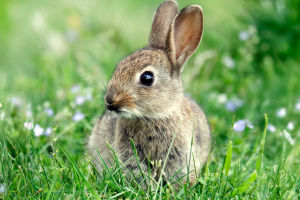Today, Lykkers, we dive into the life of one of the most fascinating animals that inhabit the high mountains of Europe—the Alpine Ibex (Capra ibex).
This majestic species, a symbol of the Gran Paradiso National Park, offers insight into the delicate balance of nature and the continuous efforts to preserve such a remarkable creature. Let's explore its unique features, its role in the ecosystem, and the conservation efforts that keep it thriving.
Physical Characteristics of the Alpine Ibex
Size and Weight
The Alpine Ibex exhibits a striking dimorphism, with males and females differing greatly in size and physical traits. Adult males can weigh around 90 kg and measure up to 160 cm in length, while females are significantly smaller, ranging from 35-49 kg in weight and 135 cm in length.
Horns
A distinctive feature of the Alpine Ibex is its horns, which are permanent and hollow. These horns are covered in a horn sheath, which adds to their robust appearance. Males have significantly larger and longer horns, reaching a maximum length of 92 cm, while females possess shorter and thinner horns, averaging 34 cm in length.
Diet and Habitat
Feeding Habits
The Alpine Ibex is an herbivorous ruminant, with a diet that varies according to the season. During the summer months, it feeds primarily on fresh grass, while in the colder months, it turns to shrubs, lichens, and conifer needles for sustenance.
This dietary shift allows it to survive in the harsh alpine environment.
Seasonal Movements
The species is well-adapted to life in the high mountains, where it thrives in alpine meadows and rocky cliffs. In spring, males descend to lower valleys to graze on fresh pastures, but as summer arrives and the snow melts, they move higher up the slopes. Females and young Ibex often remain in more sheltered areas, such as rocky cliffs, to protect themselves from predators.
The Fragility of the Alpine Ibex
A Victim of Past Threats
Once on the brink of extinction, the Alpine Ibex almost disappeared due to hunting pressures in the late 19th century. A small group, fewer than 100 individuals, survived in the Gran Paradiso massif, and through conservation efforts, the population began to recover.
However, this genetic bottleneck has left the species with reduced genetic diversity, making it more vulnerable to diseases and environmental changes.
Genetic Vulnerability
Reduced genetic variation affects the Ibex's ability to adapt to new environmental challenges. A lack of genetic diversity lowers the species' resistance to diseases, as fewer individuals may possess immunity to pathogens.
Recent research in the Gran Paradiso National Park has focused on understanding the connection between genetic diversity and disease resistance in the Alpine Ibex. This research aims to improve the species' long-term survival prospects.
Conservation Efforts and Research
Active Monitoring and Protection
The Gran Paradiso National Park plays a crucial role in the protection and monitoring of the Alpine Ibex. Collaborating with cutting-edge genetic research institutes, the park's conservation efforts focus on both immediate protective measures and long-term research projects.
These initiatives aim to assess the health of the population and address the challenges posed by limited genetic diversity.
Understanding Ecological Balance
The Alpine Ibex's diet is directly tied to the alpine meadows, and changes in the environment can disrupt this delicate balance. Studies have shown that the availability of nutritious vegetation influences the movement patterns of the Ibex, with a preference for cooler areas during summer to regulate body temperature. However, as temperatures rise and vegetation shifts, the Ibex faces increasing pressure to adapt.
Challenges and Future Directions
Environmental Shifts
One of the greatest challenges faced by the Alpine Ibex is the changing climate. Rising temperatures push the animals higher up the mountains, where food becomes scarcer.
Additionally, earlier snowmelt disrupts the synchronization between the growing season and the birth period of the young Ibex. Furthermore, the abandonment of traditional pastures by humans has allowed forests to advance, replacing vital meadows with less suitable habitats.
Conservation Research
Ongoing research in the Gran Paradiso National Park seeks to address these ecological challenges. Scientists are working on experimental methods to manage alpine meadows and ensure the sustainability of the Ibex population. Their findings will help guide future conservation strategies and ensure that the Alpine Ibex continues to thrive in its natural habitat.
Conclusion: A Glimmer of Hope for the Alpine Ibex
The Alpine Ibex is a resilient animal, capable of surviving in some of the harshest conditions on Earth. However, its survival is closely tied to the health of its ecosystem, and with the help of dedicated conservation efforts, there is hope for this remarkable species.
As we continue to understand the complexities of its genetic makeup and its interaction with the environment, we can take steps to ensure that the Alpine Ibex remains a symbol of the wild beauty of the mountains for generations to come.


